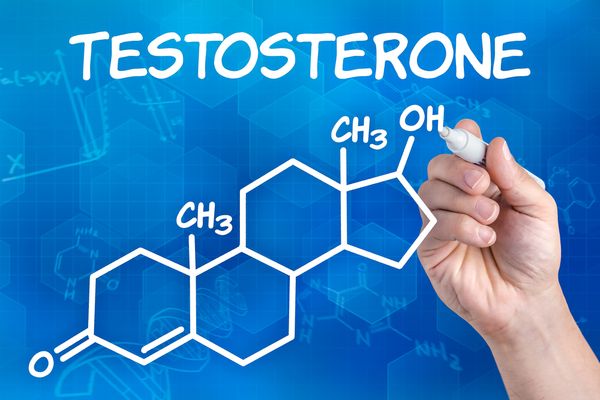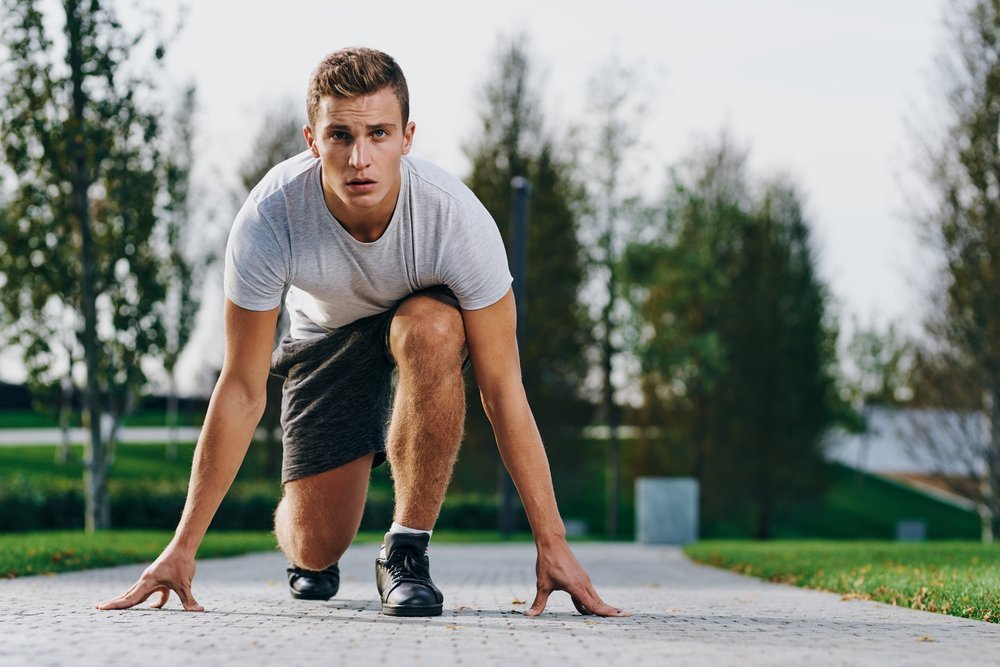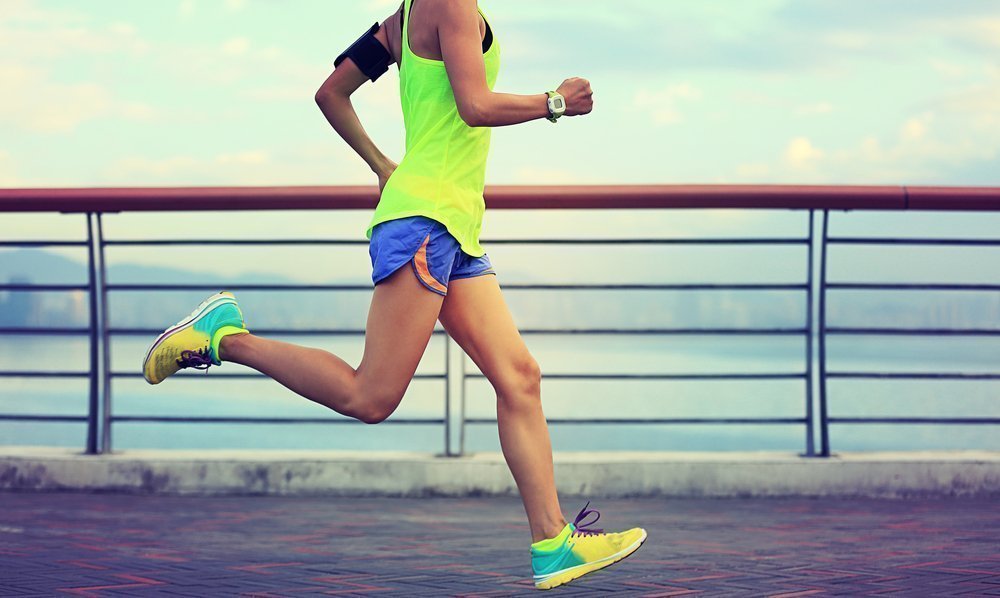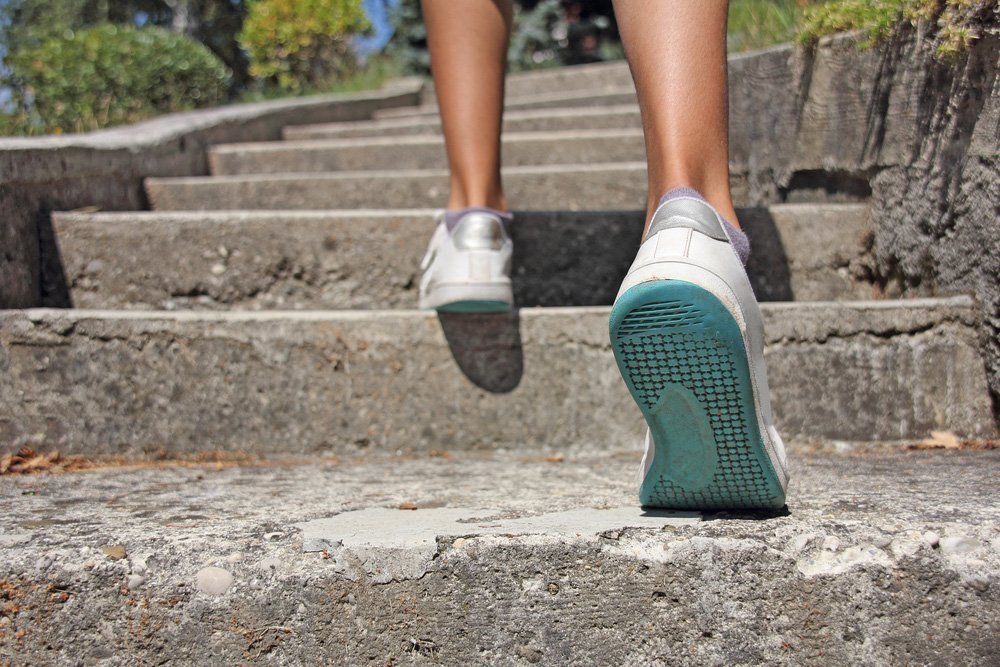Skeletal muscle is made up of highly elastic fibers connected by tissue, and is so named because it is attached to bone. Their main job is to move the bones and they are used in all physical activities, including running.
- Which muscles work when running - training from a physiological point of view
- core group.
- Which muscles are involved in the different types of jogging?
- A little about the biochemistry of running
- Benefits of Running for Men
- Reduced fat deposits
- Strengthening of the joints
- Lowering blood sugar levels
- Lowering blood cholesterol levels
- Strengthen your diaphragm muscles
- Strengthens the respiratory system
- The blood pressure normalizes.
- It stimulates the immune system.
- What muscles work when you exercise?
- Stretching to strengthen the leg muscles
- Are your muscles on fire?
- Running as one of the most effective physical activities for the body
- A fit body: Get in the habit of running
- Training the leg muscles while running
- hip extensor
- glutes
- thigh muscles.
- calves
- Anterior shin muscle (tibialis anterior)
- peroneus
- Exercise upper body muscles while running
- shoulder and core muscles
- Belly
- Can you train the abdominal muscles?
- Train your leg muscles
- Exercises to increase cadence
- Read more
- Immunodietology - not for everyone, but for you.
- A child's first cold: what to prepare for?
- What muscles work when jogging outdoors?
- Which upper body muscles does running strengthen?
- Strong sprinters, lean marathon runners
- What muscles are involved in running?
- muscles of the upper body
Which muscles work when running - training from a physiological point of view
Running is a workout that experts say is one of the most effective for maintaining muscle tone and burning calories. There are different running techniques, each of which uses specific muscle groups. Below you will learn how to learn to run different distances, which breathing techniques you should use during training and which muscles work when running.
It's important to know that running middle distances doesn't just strengthen your legs and heart muscles. Proper running involves the whole body and all the muscles in the body.
Long-distance running primarily trains and strengthens the leg muscles. The quadriceps muscles are used the most. This muscle group covers the front and sides of the thigh. Their main task is to straighten the lower extremity in the knee joint and flex the hip. When running, it is the quadriceps muscles that keep the body stable and cushion it in the event of a fall.
This is important! Many people wonder if middle-distance running can help them build leg muscles. To build muscle you need strength training, and jogging is about strengthening your muscles, not pumping them up.
Before you start training, it's important to understand what proper running is and what running techniques are. This will help you avoid injuries, understand the inconveniences of running and organize your training.
The technique of short and long-distance running involves muscular work, which can be divided into two groups:
core group.
- quadriceps. The main muscle group involved in the running process. They coordinate the movement of the knee and hip joints.
- The muscles on the back of the thigh flex the leg.
- glutes. Works best during exercise, helps maintain an upright posture and stretches legs while exercising.
- hip and lumbar muscles. Increases quadriceps muscle activity and allows for more knee flexion.
- elbow. They help raise the legs, stabilize the body, regulate foot placement and movement, and bend the knee.
Which muscles are involved in the different types of jogging?
This technique is considered to be the most difficult for beginners because it puts a lot of effort on the glutes, legs, and abs. The lung and heart muscles work hard during the ascent.
Running distances from 30 to 400 meters - trains all muscle groups and maximizes fat burning.
Optimal technique for middle-distance runs. Alternate between slow pace (brisk walking) and maximum acceleration. This technique focuses on endurance training and increases strength levels. If you want to try long-distance running in the future, start with interval training and remember that breathing technique is important: breathe in through your nose and breathe out through your mouth with every alternate step.
This technique is important for physically fit people. If you are an inexperienced athlete and want to avoid injury, beginner jogging techniques may be better for you. With the right training and some stamina, you can lose weight effectively and quickly with the right interval jogging.
Running on the treadmill engages the same muscle groups that exercise outdoors. Features of running on a treadmill:
A little about the biochemistry of running
Running is an endurance exercise in which all internal systems work in a special mode.
The process of biochemical reactions is triggered by your muscles running out of energy after a few minutes of exercise. The body does its best to fuel the muscles by redistributing blood flow, oxygen, trace elements, salts, and so on.
There are several energy sources:
Glycogen is in the liver and muscles; its reserves are small and quickly depleted. After only 10 minutes, the body begins to gain energy from the fat reserves. This requires large amounts of oxygen.
With the onset of stress, the sympathetic nervous system is activated, which in turn stimulates the humoral system. Regulates the 'fluid processes' of the body with hormones (sweat, saliva, lymph secretion, etc.).
The adrenal glands produce adrenaline. In addition to other processes, it has the task of reducing stress and activating the body's defense functions. The production of adrenaline starts as soon as the training begins. The athlete feels a surge of energy in the initial phase, which is due to the action of this hormone. It speeds up all metabolic processes and forces the liver to store glycogen, which is the easiest way for muscles to 'get' energy.
Running puts your blood vessels to a hard test. The need for oxygen forces the athlete to breathe more frequently, the blood becomes saturated with O2 molecules and the heart rate increases. The vessels of the external circulation expand and those of the small circulation contract. All the body's forces are directed towards supplying the muscle tissue with oxygen and micronutrients.
Benefits of Running for Men
Reduced fat deposits
Men often opt for strength training and neglect cardio training. Running helps to burn out the body, or as bodybuilders say, 'dry out' and build ideal definition or shed excess weight. Endurance training is essential for building muscle mass.
Strengthening of the joints
You know that cartilage and muscles are responsible for keeping joints healthy. Running helps to improve the active supply of micronutrients to connective tissues, and also strengthens muscles.
Lowering blood sugar levels
During exercise, the body uses all sources of glucose to replenish energy stores, including blood sugar.
Lowering blood cholesterol levels
Cholesterol is a type of carbohydrate. It is important for the production of hormones including testosterone, the main male hormone. However, too much cholesterol is dangerous for your health. When you run, all excess fats are oxidized, including cholesterol. extra cholesterol.

Strengthen your diaphragm muscles
The intense movement of the diaphragm during breathing improves its tension. Deep breathing becomes a habit even when the body is not actively working.
Strengthens the respiratory system
Light jogging expands the bronchi and pumps oxygen into them.
The blood pressure normalizes.
The more weight a person has, the more fluid in the blood vessels, the higher the blood pressure. During endurance exercise, body weight decreases and metabolic rate increases, resulting in lower systolic and diastolic blood pressure.
It stimulates the immune system.
The high oxygen content of the blood during running increases the amount of immunoglobulin, which strengthens the immune system's defenses against colds.
What muscles work when you exercise?
Now let's look at which muscles are involved in running.
- The quadriceps femoris muscle, whose main function is to straighten the legs in the knee joints;
- The biceps femoris is the biceps muscle responsible for bending the legs;
- calf muscles. The main functions are flexion of the lower limbs and movement of the ankle;
- Buttock muscles (gluteus maximus). They are used for abduction, adduction, rotation of the thigh and shin extension.
Abdominal, back and shoulder muscles are indirectly stressed when running.
Stretching to strengthen the leg muscles

Stretching is necessary to improve the flexibility and endurance of the target muscles. To run longer and faster, experts recommend incorporating stretching exercises into your program. Here's a simple setup for training at home.
- The starting position is standing. Spread your legs wide and lift your toes. Take a deep breath and stretch your arms up. Hold the top position for a few seconds. As you exhale, gently lower your arms in front of you. Repeat the exercise 10 times;
- Don't change positions. Press palms against waist. Tighten your buttocks. Exhale and shift your weight to your right leg by doing a side lunge. With an inhale, straighten up. Repeat the lunges with your left leg. Do 10 repetitions. Complement the exercise with a heel strike. When doing the lunges, raise your standing foot onto tiptoe. Perform another 10 repetitions;
- Stand with your feet apart, breathe in and stretch your arms overhead. Exhale slowly and lean forward. Lower your forearms to the floor and stand still for 1 minute. Move your body regularly to lower yourself;
- Assume the following position: feet shoulder-width apart, body bent forward until it is parallel to the floor, palms pressed against the ankles. From this position, gently lower your pelvis to the right and left. Pause for 2 seconds at the end of each lunge. Perform 10 reps on each side;
- Step forward with your right leg. Extend your left leg backwards as far as possible. Bend your body so that it forms a line with the back foot. Place your palms on the floor. Allow your pelvis to 'bounce' to increase the stretch in the groin and hip areas. Perform the exercise for 1 minute, then switch legs and repeat this element;
- Once you have performed the 'bouncing' movements, lower the knee of the back leg to the floor and hold this position for 1 minute. Then bend the back leg and draw the foot towards the buttocks. Grab the heel with your hand and pull it towards you. Stretch for 1 more minute. Repeat all movements with the lunge on the other leg;
- Stand up and spread your legs wide apart. Shift your body weight onto your right foot and lower your pelvis. Spread your body and arch your chest toward your left leg. Hold the position for 1 minute. Then repeat the exercise on the other side;
- Lie on your back and press your lower back against the floor. Lift your right leg and press it against you. If that doesn't work, place your hands on your shins and pull your knee toward you. Hold the thigh straight for 1 minute, then repeat the exercise with the other leg;
- Get on all fours and straighten your knees until your hips are very straight. Hold this position for 1 minute. Then start gently 'bouncing' your pelvis and try to pull your knees even further apart. Do the exercise for another 2 minutes;
- Lower yourself to your knees. Press your pelvis against your ankles. Lean back slightly and touch the floor with your palms. Gradually lower your back lower and lower to the floor. Reach the end position and stand for 1 minute;
- Stand tall. Draw your knees together. Lean forward and place your palms on the floor. Your position should look like a triangle. Stay in this position for 1 minute.
Are your muscles on fire?
We looked at what muscles are developed during running and told you how to pump them up a little. However, there is an opinion that running can burn muscle mass - not fat, just the beautiful relief that is so difficult to build. In fact, there is one such problem that affects every bodybuilder on this planet - how to get rid of fat but not muscle mass. If you go on a low-calorie diet and run actively, everything will lose weight, and we are not happy with such a result.
So here are some tips on the matter:
- It is best to run in the morning before breakfast when liver glycogen levels are low. This allows the body to draw more energy from fat stores and temporarily 'forget' muscle mass.
- Add BCAA amino acids to your morning ration and casein protein before bed;
- Avoid aerobics in the evening if you want to maintain muscle and lose fat;
- Remember to calculate your diet carefully. You should consume at least 2 g of protein per kilogram of body weight per day.
- Remember to include strength training in your program. Let's explain that in simple language. If you want to lose weight, limit the calorie intake in your diet. The body wants to get rid of everything that requires energy - including fat, water and muscle. However, if you do strength training on a regular basis, your body will understand that it can't train without muscles, so it 'holds on' to them. That's how it works.
Well, we've looked at which muscles run strengthens, but we haven't answered exactly if they actually get burned. In fact, it's all very individual - the effect depends on the runner's body, body type, hormones and lifestyle. Any aerobic activity leads to weight loss. So stick to the tips above to ensure only fat is burned. If you feel like your muscles are starting to melt away too, add more calories to your diet at the expense of protein.
Running as one of the most effective physical activities for the body
Modern society places high demands on a woman's appearance. Your body must be fit and slim. To achieve this effect, many people visit gyms, where they pump out individual muscle groups through weight lifting and anaerobic exercise. However, to tone the entire body and maintain a good figure, one can resort to running.
It is an accessible sport and suitable for people of all ages, genders and fitness levels. Running gives the whole body a boost of health, relieves psycho-emotional tension and increases energy expenditure. It has been proven that while running, endorphins are produced in the body, which trigger feelings of happiness and serenity and suppress negative emotions.
Running has a positive effect on the cardiovascular system. This physical activity increases the number of red and white blood cells in the blood and improves the immune system. Regular jogging works the heart muscle, which increases oxygen uptake and reduces the risk of many respiratory diseases.
Running improves fat metabolism, which contributes to weight loss and the burning of extra calories. So, running is an effective way to lose weight and get a beautiful body.
Runners suffer less often from joint diseases, their musculoskeletal system is noticeably more robust and healthier. Sport also has a positive effect on the liver. It has been found that she receives many times more oxygen while jogging than during everyday activities.
The positive effects of regular jogging can be felt quite quickly. After just a few weeks, your body will feel all the benefits of sport. However, some people stop exercising after the initial joint and muscle soreness, which can be a result of the body adapting to the exertion. To minimize these negative effects, it is important to pay attention to running techniques and follow some rules that apply to all sports.
A fit body: Get in the habit of running

A person's health largely depends on the efforts he makes to maintain it. Even a good body should be kept in good condition. The easiest way to get a great body is to make running a habit.
Leading fitness trainers recommend that novice runners follow these rules:
- Choose running shoes (they need to properly distribute body weight);
- Choose special running clothes (which absorb sweat, protect against wind and do not cause allergies);
- Start running in warm weather (it makes it easier for the body to adjust to the effort);
- Don't forget to do a pre-workout warm-up to warm up your muscles;
- Beginners should start with brisk steps and then jog;
- Reduce your running pace if you feel pain in your sides;
- don't stop abruptly when you've finished your run;
- Don't run immediately after waking up because it is very tiring for the body.
Focus on the quality and regularity of your run, not the distance. Treadmills with special surfaces that do not stress the joints are best suited for running. Unpaved paths in the park are also a good choice. However, avoid concrete paths – they are just as bad for your joints as the asphalt in the city. Most people find the first month quite tiring, but once you get through this critical period, you can look forward to a beautiful body and lasting strength in your new fitness routine.
Training the leg muscles while running
When running, most of the work is done by the leg muscles. However, the extent of the work and when which muscle is activated largely depends on the intensity and duration of the work.
hip extensor
High leg raises activate the hip flexors.
They are responsible for a number of important functional activities: lifting and carrying the leg forward, standing, running and raising the leg. They work in conjunction with the abdominal and core muscles.
glutes
Running has a direct impact on the glutes. You can feel them during squats, overhead runs and jumps.
Fun Fact: The gluteus maximus is the largest muscle in the body, but it's no more important than the other two. Both the gluteus medius muscle and the small gluteus maximus muscle are essential for stabilizing the body and legs when running. They also work while sitting, standing and squatting.
thigh muscles.
These are the quadriceps and biceps femoris.
The hamstrings are on the back of the legs, as are the biceps on the upper arm.
Running naturally strengthens the quadriceps muscles and develops them accordingly. The hamstrings come into play in the stretching and contracting of the lower leg and are responsible for moving the shins to the glutes.
calves
The calves are responsible for the movement of the toes, stabilizing the leg and protecting against sprains. Experienced runners have well-developed and expressive calf muscles. And they're usually the ones that hurt the most after a long run and when running uphill.
Anterior shin muscle (tibialis anterior)
Located on the front of the lower leg. He is involved in the upward movement of the toes. He is responsible for stabilization and restrains the impact load.
Weak muscles can lead to such a common injury as periostitis. To strengthen them, special exercises, stretching and massage are required.
peroneus
They are located on the sides of the shin. 'When you flex your toes you can feel those muscles. They are responsible for bending the ankle backwards, stabilizing the foot and keeping it in the correct position.
Exercise upper body muscles while running
Running primarily works the muscles of the lower body, but also works the upper body. Running efficiently and economically requires strong shoulder and core muscles.
shoulder and core muscles
Deltoids, delts, biceps and triceps. Activated by the movement of the arm in relation to the odd leg, they stabilize the trunk and ensure correct extension and translation of the body.
The core muscles become noticeable during a long workout through fatigue and a feeling of 'tightness'. The shoulder and upper body muscles are heavily used during sprints. They are part of the sprinter's speed machine.
Belly
A strong core is essential for the harmonious functioning of all muscles when running, good hip extension, maintaining the body during prolonged work and protecting against excessive fatigue. It helps maintain proper running technique and balance.
The rectus abdominis, the lower abdominal muscles, the transversus abdominis and the intercostal muscles, i.e. the entire abdominal musculature, are equally responsible for this. On the one hand, this means that runners have to pay a lot of attention to training their abdominal muscles. On the other hand, running seems to be a very attractive sport with its ability to work the abdominal muscles.
Can you train the abdominal muscles?
Again, this question is not easy to answer - it is possible to train, develop, tone and tone the abdominal muscles as much as possible.
In general, the abdominal muscles can be specifically trained when running. You can do this by specifically thinking about how your core is working with the movement, extending after your crotch and shoulders.
You can pull in your stomach slightly - so that it does not obstruct your breathing. The rest of your body muscles should be relaxed to achieve an economical running style.
Trail running can help you work your abs. Trail running requires you to change your posture; running uphill teaches you to lift your legs higher and use your body more; in the forest you have to dodge branches and lift your legs over roots.
Train your leg muscles
You need strong, powerful legs to achieve high mileage and maintain it the full distance. Any runner looking to improve their speed should look into lower leg exercises from the bodybuilders' arsenal. Would you like to train your calves? Use the multi-joint toe press and tiptoes while standing or sitting. Load your legs with squats and weighted lunges. They are considered the best exercises for the lower body muscles. Don't forget the one-legged squat ('pistol squat'). Be sure to include some jumping jacks in your exercise routine. Jumping develops explosive power, on which efficiency when pushing and accelerating depends.
Stand up straight with your feet shoulder-width apart. Put your hands behind your head. Get into a flat squat: your hips should be parallel to the floor. From this position, jump up. Try to make the jump as high as possible. Repeat this ten times.
Grab a dumbbell and stand up straight. Step forward and lower yourself into a lunge: the front leg bends at a right angle, the knee of the back leg is close to the floor. Jump as high as you can, switching limbs on the fly. Land in a lunge but with your feet kicked back – the leg that was kicked back should be in front and vice versa. Do ten repetitions.
In this exercise, one leg becomes the support or kick leg and the other leg becomes the swing leg. Stand up straight, hands down. Bend one leg and lift it up. Jump up and float in the air. Land on the standing leg. Repeat this 10 times, first with one foot, then with the other.
Pick up ten medium objects (you have to jump over them). Arrange them alternately in two rows: the items of the second row should be opposite the rooms of the first row. The distance between the closest objects is about sixty centimeters. Stand to the side of the first object: feet shoulder-width apart, elbows bent. Jump diagonally so that after jumping over the first object you are on the side of the second object. Turn to the next landmark and repeat the jump. Try to jump high and fast. Repeat the exercise up to ten times.
Exercises to increase cadence

Running speed is affected by the length and frequency of steps. Obviously, to increase your speed, you need to increase your stride length and cadence. To increase stride length, runners use a variety of methods, such as B. Muscle stretching exercises. More often, however, the focus is on the second element of fast running: cadence.
To improve your cadence, incorporate these exercises into your fitness routine:
- stair running. Run up the stairs at a fast pace. Don't skip steps - take a step at every step.
- Jog with your knees elevated. Run in place or from one point to another. As you run, move your legs quickly and lift your hips up. Help yourself with active arm movements.
- Walk around markers. Draw a series of small circles on the track. Run along them quickly, crossing all the circles one by one. If the track is laid out with small tiles, you can not draw circles, but run alternately on adjacent tiles or over one tile. It is best to combine this exercise with the previous one, ie running with high knee lift.
The suggested exercise sets can be done on non-running days, or both exercises can be done on the same day. The most important thing is that you pay attention to your well-being and avoid overtraining.
Read more

Immunodietology - not for everyone, but for you.

A child's first cold: what to prepare for?
What are the characteristics of respiratory viral infections in infants? Who is hospitalized?
What muscles work when jogging outdoors?
- The thigh muscles. The quadriceps, one of the largest muscles in the human body, is located on the anterior and partially lateral surface. The four major bundles that make up the quadriceps are often divided into distinct muscles: rectus, lateral, middle, and middle hamstrings. When running, they work primarily in the initial phase of the stride by raising the thigh and bringing the shin and foot forward.
- hip flexors. This primarily involves the biceps femoris (thigh muscle), which is located at the back of the buttocks up to the hamstrings. The hamstring is at its lower part. The biceps femoris causes the heel to move backwards and is engaged in the last phase of the stride, at push off and after.
- glutes. The gluteus maximus, gluteus medius, and gluteus minimus are all active at the beginning of the movement, during the leg lift, during the push off, and when the leg is thrown back. You are only relaxed during the flight phase. Also, these muscles are involved in maintaining body balance while running.
- calf muscles. The calf and camel muscles are engaged when the foot is in action, ie from the moment of landing to the moment of push-off. Since these muscles are closely related to the extension of the foot, they bear the brunt of the foot's heel-to-toe transition and push-off. This movement keeps the calf inflated, which is why they are well developed in professional runners.
- Anterior shin muscle (tibialis anterior) It is located on the front of the shin. It helps flex the foot so it connects at push off. It helps to stabilize the position of the legs.
- The peroneal muscles of the lower leg They are located on the sides of the shin. You can feel them when you twist your foot left and right and bend it towards you in extreme positions. They also help with the walking work of the foot - rolling, pushing off. They also help stabilize the foot and proper pronation, meaning they help keep the feet parallel to each other instead of turning them outward.
Which upper body muscles does running strengthen?
- The upper muscles of the shoulder girdle. The arm, bicep, and tricep muscles work in tandem with the legs to set the pace. They are involved in stabilizing the body and help the runner move forward rhythmically. The arms are particularly pronounced in sprinters, they even work separately.
- Trunk muscles (cortex). These are essentially the abdominal muscles and the deep muscles responsible for spinal stabilization and balance during movement. While the core muscles are primarily responsible for maintaining balance, the abdominal muscles are actively involved in elevating the knees and thighs. They are particularly stressed when running uphill.
It's not possible to build too much muscle mass in the abdominal area. But it's entirely possible to burn fat by opening up the muscle relief, stretching, drying and working the 'knuckles'. Trail running is particularly good for this. On gravel and trails, your abs need more stability to keep you balanced. Running on hills teaches you to lift your legs higher uphill, while in the forest you have to lift your feet to avoid tripping over roots or bumps. Trail runners have very impressive abs without much extra training.
Strong sprinters, lean marathon runners

Muscle building is highly dependent on the type of run and the distance. When watching track and field competitions, it's easy to see that sprinters have excellent musculature, while marathon runners look so exhausted that only race results belie that assumption.

You also need to take into account that the conditions and terrain of the racetrack itself affect the work of certain muscles. The muscles that straighten the spine and the iliopsoas muscle work harder when running uphill because it is more difficult to stabilize the spine when bending down than when standing upright with the vertebrae closely aligned. Bending over puts more stress on the muscles at the front of the shin and thigh, which are responsible for the impact load when the foot hits the ground.
What muscles are involved in running?
First, let's look at the muscles involved in running from top to bottom.
muscles of the upper body
In addition to being involved in the mechanisms of breathing, the pectoral muscles also play an important, albeit limited, role in forward movement. This becomes clear when you look at a runner's movements at a slower pace. With each step forward, the hips rotate slightly - first to one side and then to the other. The spine rotates with them, which can lead to instability in the abdomen and chest if this movement is not stabilized. Slight contraction and relaxation of the chest muscles therefore not only helps to keep the body uprightbut also corrects for the changes caused by the runner's forward motion at running speeds of up to 32 kilometers per hour.

The muscles that attach to the humerus and surround the shoulder joint, particularly the M. pectoralis major i pectoralis majoralso move passively with the arm swings that accompany each step. When actively contracted, they also help the shoulders participate in the movement and counteract the pulling force of the deltoids. deltoids.. The stronger the chest and abdominal muscles, the better the long-distance runner's posture in the final stages of the race.
The importance of these muscles to running lies in the understanding of the 'weak link' principle: an athlete's performance does not depend on the strength they can develop, but on the muscles that tire first. If the chest muscles are not trained enough and tire quickly, the efficiency of running decreases. When the chest muscles are weak, not only is breathing efficiency compromised, but so is spinal support. In addition, the arms are less involved in the movement, which inevitably leads to a slowdown in running speed.
Read more:- Lift your heels off the floor during the squat.
- Why do your calves hurt when you run?.
- lower leg flexion.
- The calf is constipated when running.
- Muscles congest when running.
- positioning of the feet.
- Acute pain in the calf muscle when running.
- Anterior tilting of the pelvis.
